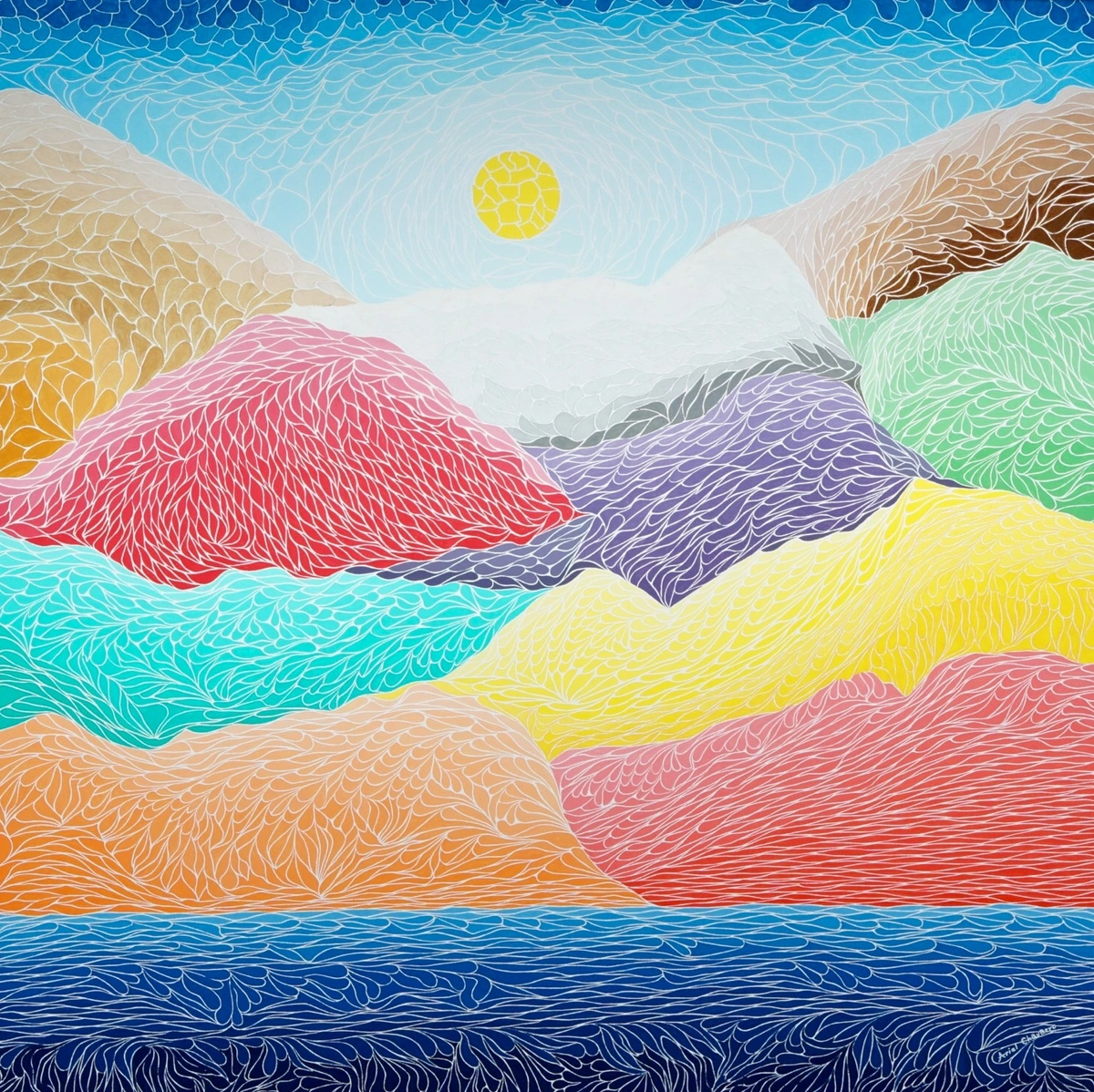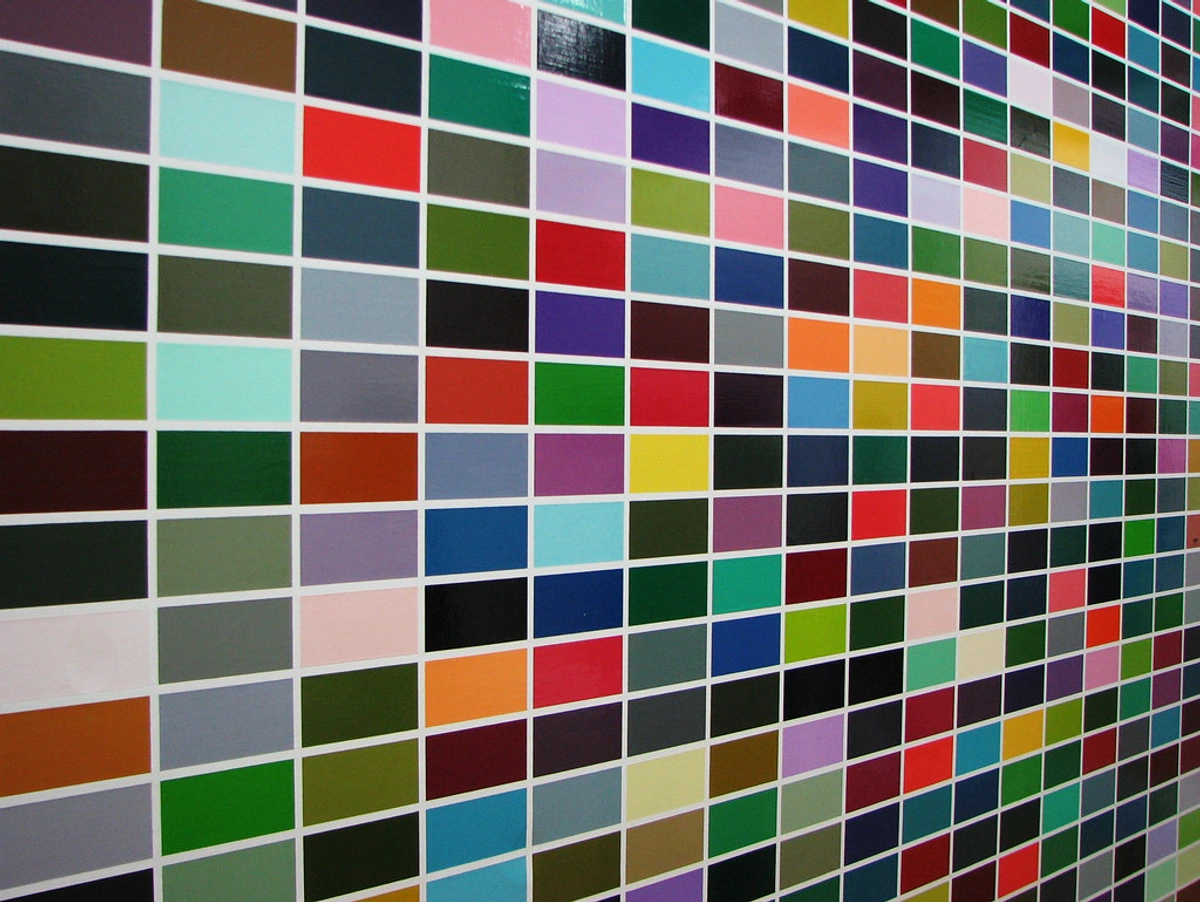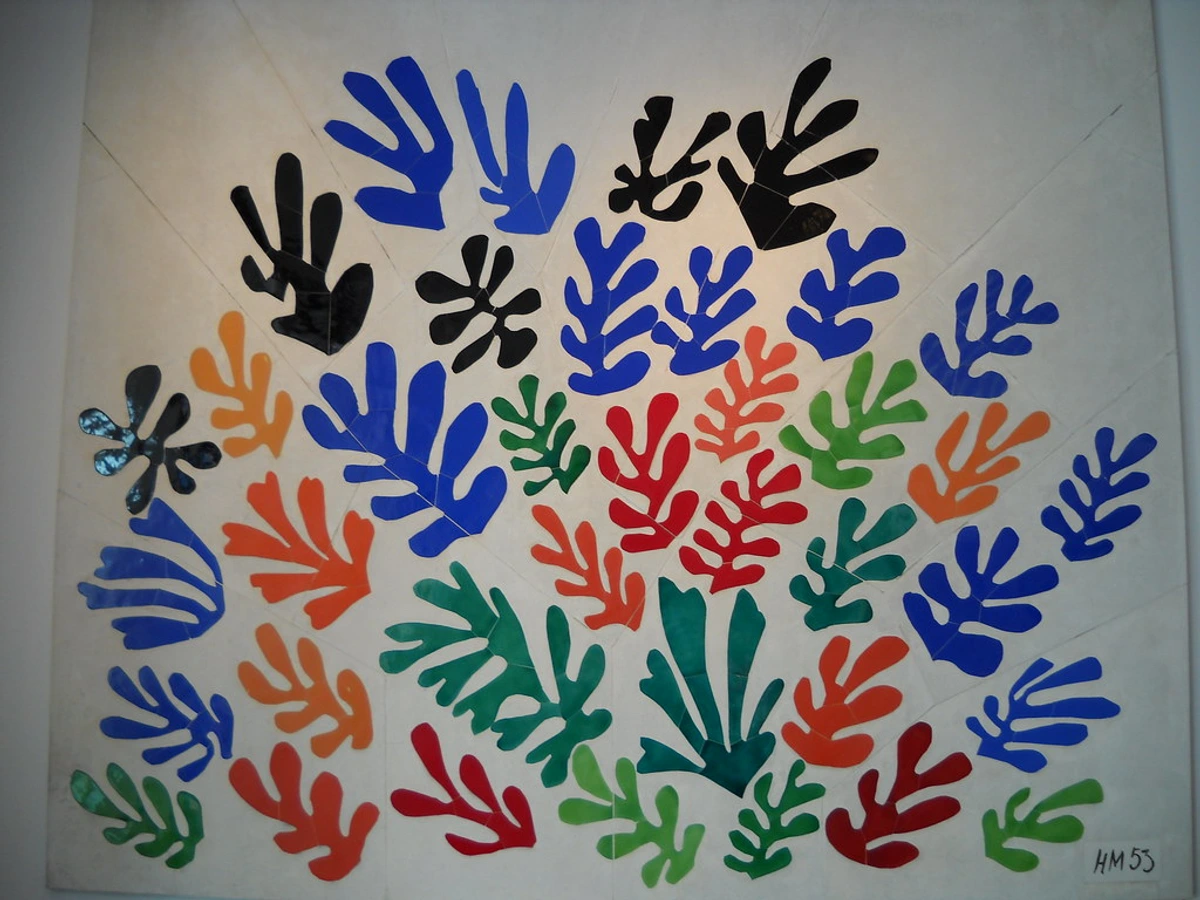Mindful Viewing: How Abstract Art Can Enhance Your Daily Well-Being
Have you ever walked into a room, glanced at a painting, and then just... walked past it? Yep, me too. More times than I care to admit. In our perpetually busy lives, where our attention is a currency constantly devalued by demands, truly seeing anything can feel like a luxury. But what if I told you that intentionally engaging with something as seemingly simple as an abstract painting could be a quiet revolution for your mind, a little sanctuary in the chaos?
For a long time, I struggled with the idea of "mindfulness." My brain is a squirrel, constantly chattering, darting from one thought to the next. Meditate? Sit still? My internal monologue just decided that was a great time to re-evaluate every awkward social interaction I've ever had. But then, almost by accident, I started finding moments of genuine presence, not on a yoga mat, but in front of a canvas. Especially abstract ones.
What Even Is Mindful Viewing? (And Why Abstract Art?)
Mindful viewing isn't about becoming an art critic or deciphering hidden messages. It's simply about being fully present with a piece of art, letting go of judgment and expectation, and observing what arises within you. Think of it as a mini-meditation, but with colors and shapes instead of just your breath.
So why abstract art? Well, because it doesn't give you much of a choice! Unlike a landscape or a portrait, there's no obvious subject to "get." No "Is that a cat or a dog?" dilemma. This lack of concrete representation is precisely its superpower. It forces your mind to slow down. Without a recognizable narrative to cling to, your brain has to work differently, engaging your senses and emotions rather than just your logical processing. It’s like being dropped into a forest without a map; you have to pay attention to everything.
It’s often about allowing the emotional language of color or the role of texture to speak to you directly, bypassing the usual mental chatter. This is where the magic happens.

The Canvas as a Mirror: How Abstract Art Reflects Us
Abstract art is less about what the artist intended and more about what you perceive. It becomes a mirror, reflecting your inner landscape. When you look at an abstract piece, you're not trying to find a hidden object; you're often finding a hidden feeling, a forgotten memory, or a spontaneous thought. This introspective journey can be incredibly therapeutic, helping you to find meaning in non-representational works.
Here's how this introspection often plays out:
Aspect of Abstract Art | How it Encourages Mindful Reflection |
|---|---|
| Color | Evokes moods, memories, or energetic responses. "Why does this blue feel so calming today?" |
| Form/Shape | Suggests movement, stability, tension, or harmony. "Do these jagged lines make me feel agitated, or energized?" |
| Texture | Invites tactile imagination, hints at process, adds depth. "I wonder how that paint feels under my fingers." |
| Composition | Guides the eye, creates balance or imbalance. "Where does my eye naturally go? What does that path feel like?" |
This personal engagement is truly what makes abstract art compelling.
Practical Steps for a More Present Gaze
Ready to give it a whirl? You don't need a gallery, just a quiet moment and perhaps a print hanging on your wall (speaking of which, I've got a few here if you're looking!).
- Find Your Peace: Choose a time and place where you won't be interrupted. Turn off notifications. I usually make myself a cup of tea. It's part of the ritual.
- Choose Your Canvas: Pick an abstract piece you're drawn to. It doesn't have to be famous or expensive; just something that catches your eye.
- Soft Gaze, Open Mind: Look at the art without judgment. Don't try to name it or understand it immediately. Just let your eyes wander.
- Engage Your Senses (Metaphorically!):
- Colors: Notice the specific shades, how they interact, where they are vibrant, where muted. How do they make you feel?
- Shapes & Lines: Follow the lines. Are they sharp, soft, swirling, straight? What shapes emerge?
- Texture: Even if it's a print, imagine the texture. Is it rough, smooth, layered?
- Space: How does the art fill the space? Does it feel expansive or contained?
- Notice Your Thoughts and Feelings: This is the mindful part. What thoughts pop up? Do you feel resistance, curiosity, peace, confusion? Acknowledge them without judgment and gently bring your attention back to the art. "Oh, there's that thought about dinner. Okay, back to the red blob."
- Stay as Long as You Like: There's no timer. Stay for 30 seconds or five minutes. The goal isn't duration, but presence.
This is a fantastic, low-stakes way to practice art therapy exercises you can try at home.

My Own Wobbly Journey to Artful Serenity
I won't lie, some days I still rush past everything. My internal squirrel is particularly rampant when a deadline looms, or when I've decided it's time to reorganize my entire studio (a truly Herculean task, trust me). But I've learned that even a brief, conscious pause in front of a vibrant abstract piece can re-center me. It’s like a mini-reset button.
There's a specific piece I have, one of my earlier experiments with color fields, that's almost entirely purple and orange. When I’m feeling overwhelmed, I sometimes just stare at it. The purple, a color often associated with calm and introspection, seems to absorb some of the frantic energy, while the orange, with its warmth, reminds me of vitality and creativity. It’s a silent conversation, a gentle nudge back to what matters.
This isn't just about admiring pretty pictures; it's about using art as a tool for self-discovery, much like my own journey as an artist. It's about finding that quiet space within yourself, even if it's just for a moment, and realizing that sometimes, the most profound insights come from simply looking. It’s a deeply personal journey.

Frequently Asked Questions (FAQ)
Q: Do I need to understand art history to practice mindful viewing?
A: Absolutely not! That's the beauty of it. Mindful viewing is about your personal experience, not academic knowledge. You don't need to know anything about art elements or what design is in art to feel something.
Q: Can I practice mindful viewing with other types of art?
A: Yes, you certainly can! While abstract art is particularly conducive because of its non-representational nature, you can apply these principles to any art form. Just remember to focus on presence and observation, rather than interpretation or judgment.
Q: Will mindful viewing make me a better artist?
A: It might! By training yourself to truly see and feel, you'll likely develop a deeper appreciation for color, form, and composition, which can certainly influence your own creative practice. It's all about enriching your art experience.
Conclusion: A Quiet Revolution on Your Wall
In a world that constantly demands our attention, carving out moments for mindful viewing is a radical act of self-care. Abstract art, in its beautiful ambiguity, offers a unique gateway to these moments. It invites us to pause, to feel, to reflect, and to discover not just something new about the art, but something profound about ourselves.
So, next time you pass an abstract piece, whether it's on a gallery wall, a digital screen, or perhaps even one of my own vibrant creations available for purchase, I encourage you to pause. Just for a moment. Let your gaze soften, let your mind open, and see what quiet wisdom unfolds. It might just be the most surprisingly therapeutic five minutes of your day. Or, you know, it might just be a pretty picture. Either way, no harm done.